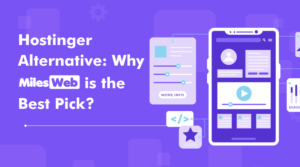Embedded Analytics in ERP: The Next Frontier of Business Intelligence

By 2025, companies are producing more data than they ever have before. A recent NASSCOM report shows that almost 80% of medium-sized businesses in India now use ERP systems to handle their operations. Over 60% of these businesses also emphasize the importance of ERP solutions offering built-in analytics features. The growing demand comes from the need to make decisions faster and use predictive insights .
As companies search for better ways to improve performance, they see embedded analytics in ERP as a major trend in business intelligence. To remain ahead in the competition, businesses must prioritize finding the right ERP software development company.
Table of Contents
What Does Embedded Analytics in ERP Mean?
Embedded analytics means integrating advanced data analysis tools and dashboards right into ERP systems. Unlike separate BI tools that force users to jump between platforms, embedded analytics provides insights within the tools people are already using.
Employees in finance, HR, sales, inventory, and other areas can access real-time data to decide with better precision.
Why Embedded Analytics Will Be Important in 2025
In today’s fast-moving, data-driven world, businesses don’t have time to rely on outdated dashboards or wait around for reports each week. Embedded analytics helps by offering:
- Quick Decisions: Managers act using real-time insights, which cuts both delays and mistakes.
- Better Operations: Automating data collection and study saves countless hours that manual tasks would take.
- Proactive Data Use: Employees integrate data into their daily routines, making decisions smarter.
- Forecasting Power: It uses past data to predict trends, handle risks, and create plans for growth.
Advantages of Embedded Analytics in ERP
Here’s how companies see gains with embedded analytics by 2025:
Real-Time Monitoring
Live dashboards show fresh metrics covering areas like sales, stock, or financial performance. Instead of switching to external BI tools, users view this information right inside their ERP system.
Tailored Reports
Different departments require specific insights. Using embedded analytics, users create custom reports without needing much help from IT.
More Accurate Predictions
Analytics tools equipped with AI and machine learning help businesses predict things like customer actions, demand cycles, and financial risks. This makes planning easier.
Stronger Teamwork
Teams use shared dashboards to decide together, stay aligned, and rely on one accurate data source within the ERP system.
Importance of ERP Software Developers
To use embedded analytics , companies must work with skilled ERP software developers who know both how to integrate technology and meet business needs.
These developers offer:
- Custom ERP modules include dashboards as part of the system.
- Data visualization tools match the workflows of the user.
- AI-powered analytics engines provide predictive reports .
- Cloud-based ERP platforms allow users to scale and stay mobile.
Top ERP software developers in India are now integrating embedded analytics into their offerings. Clients can use these built-in tools to uncover meaningful insights without needing separate BI software.
How Is Embedded Analytics Unique?
Embedded analytics goes beyond basic visual dashboards and focuses on enabling quicker, better-informed choices inside ERP systems. Traditional BI software works as a standalone tool, but embedded analytics works within ERP programs.
Here’s how it is unique:
- Users don’t have to leave the ERP system with embedded analytics, but traditional BI tools force them to switch to a separate platform.
- Embedded analytics gives live updates, eliminating the need to wait for weekly or daily reports.
- IT teams or analysts use traditional BI, but embedded analytics opens up its features to everyday team members—even those with no tech skills.
- Traditional BI systems can feel out of sync with real business activities, while embedded analytics blends into daily workflows without disrupting them.
- Real-time insights from embedded analytics help users make decisions, skipping the delays that come with collecting data or generating reports.
Embedded analytics works faster and helps improve the accuracy of business choices by staying connected to ERP systems and offering real-time, useful insights.
How Different Industries Use It
Embedded analytics is changing how sectors make decisions:
- Manufacturing: Keeps an eye on production output, costs of materials, and quality issues.
- Retail: Tracks how customers shop and helps predict inventory needs.
- Healthcare: Handles patient scheduling, equipment management, and billing processes.
- Finance: Helps examine credit risks, cash flow trends, and how money is being spent.
By building intelligence right into work systems, ERP tools assist businesses in cutting down on waste, boosting ROI, and adapting to changes.
What’s Next for Embedded ERP Analytics?
The world of embedded analytics is changing fast these days. In India, a few important trends are shaping its direction:
- AI-Powered Decision Tools: ERP systems will use past data to make useful suggestions.
- Plain Language Queries: Users will be able to ask questions in simple English and get immediate, data-based responses.
- Smarter Analytics: Blending AI with human judgment will provide better insights.
- Mobile-Friendly Dashboards: Mobile ERP interfaces will allow real-time tracking even while moving around.
These changes underline the growing demand in India to develop agile ERP systems that can include advanced BI features.
Closing Thoughts
Embedded analytics has become a must in the modern world, where data guides business decisions. Companies now aim to act quicker, operate , and make better choices, so ERP platforms need to shift from being simple transaction processors to smarter, more dynamic ecosystems.
Picking the right ERP software developer doesn’t just help manage daily work. It also lays the foundation to drive meaningful growth for the business. By using embedded analytics, companies can tap into the real potential of their data, give employees the tools they need to act , and move forward with a clear vision.







